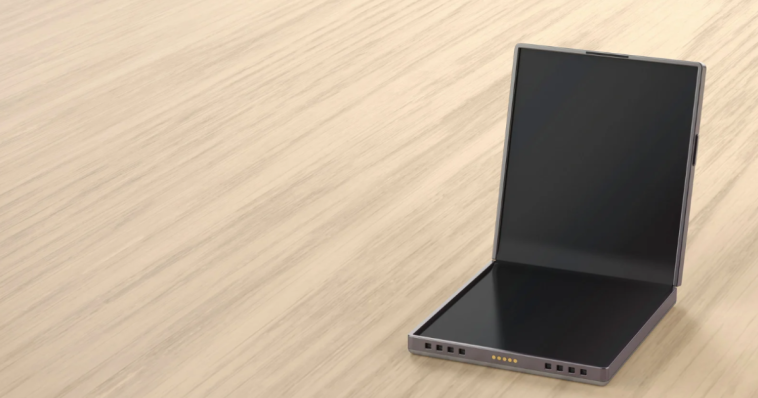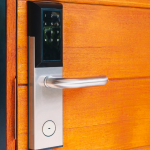A new kind of smartphone is shaking things up with the foldable phone. With a flexible screen that bends in half, it combines the best of both worlds: the convenience of a smartphone and the larger display of a tablet. This unique design lets users switch between a compact, pocket-friendly form and a spacious screen for multitasking, gaming, or streaming. It’s a fresh take on mobile tech that’s turning heads.
Early versions had their fair share of problems, like visible screen creases, durability concerns, and sky-high prices. But manufacturers have made big improvements, refining the design, strengthening the displays, and bringing costs down. As a result, foldable phones are becoming more practical and accessible, making them an exciting choice for everyday users, not just tech enthusiasts.
Should You Buy a Foldable Phone: Here’s What You Need to Know
Fold-Out Phones vs. Flip Phones
The two main types of foldable smartphones, flip phones and fold-out phones differ primarily in their folding direction and possible size variations.
- Fold-out Phones: Fold-out phones take the smartphone experience to the next level by unfolding into a tablet-sized display. These devices feature a flexible, double-wide screen that expands to give you a larger viewing area perfect for watching videos, multitasking, or gaming. With a simple fold, they transform from a compact phone into a spacious display, offering the best of both worlds. When closed, the outer screen functions just like a regular smartphone, so you can still make calls, send messages, and browse apps without opening it up. It’s a seamless blend of convenience and innovation, making fold-out phones a game-changer for those who want more screen space without carrying an extra device.
- Flip Phone: A flip phone brings a nostalgic twist to modern tech with its vertical, clamshell-style fold. When opened, it expands into a full-sized smartphone, giving you the same experience as a regular device. But when folded, it becomes incredibly compact, roughly half the size of a standard smartphone, making it easy to slip into your pocket or bag. Many flip phones also come with a small cover screen on the outside, acting like a mini smartwatch. This handy display lets you check notifications, control music, or even take quick selfies without flipping the phone open. It’s a perfect blend of convenience, style, and portability for those who want something different from the usual smartphone slab.
Each design serves a unique purpose. Flip phones offer a sleek, compact style, while fold phones deliver a larger, more immersive display.
Boosting Efficiency with Advanced Multitasking
Foldable phones aren’t just about their cool, flexible screens. They’re also built for serious multitasking. With the ability to run multiple apps side by side, they make it easier than ever to stay productive. Whether you’re answering emails while scrolling through documents or editing photos while chatting with a friend, the extra screen space changes how you work and play.
Brands like Samsung and Microsoft have taken this a step further with features like Multi-Active Window and the Surface Duo UI, letting users drag and drop files between apps seamlessly. Business professionals can juggle tasks more efficiently, and content creators can edit, write, or design with ease. It’s a powerful upgrade for anyone who loves getting things done on the go.
The Influence on Mobile Gaming and Digital Entertainment
Foldable phones are a game-changer for gamers and media lovers, offering bigger, more immersive screens that make everything look better. With extra space to play, watch, or scroll, these devices take entertainment to the next level. Whether you’re deep into a mobile game, binge-watching your favorite show, or flipping through an eBook, the expanded display makes every experience more engaging. Many foldables also pack high refresh rates (120Hz+), making gameplay smoother and more responsive. Plus, some brands are fine-tuning their interfaces to better support gaming, ensuring a seamless experience. From social media to streaming to intense gaming sessions, foldable phones bring a fresh, dynamic way to enjoy digital content.
Next-Level Durability with Innovative Screen Technology
Early foldable phones had their fair share of durability issues screens that creased too easily, hinges that collected dust, and overall fragility that made users nervous. Technology has advanced significantly since then. Recent models now use Ultra-Thin Glass (UTG) for stronger, smoother displays, along with improved hinge designs built to withstand daily wear and tear. Some, like Samsung’s latest foldable, even boast water resistance with an IPX8 rating, adding an extra layer of protection.
Brands like HONOR and Oppo are pushing the boundaries even further, experimenting with tougher materials to make foldables more resilient. While they’re still not as rugged as traditional smartphones, they’re getting sturdier with each new generation. As innovation continues, foldables are becoming a more reliable option for everyday use.
Pricing Challenges and Accessibility Issues
Foldable phones are still pretty pricey, mainly because of their complex design and advanced technology. Flagship models like the Galaxy Z Fold 5 and Google Pixel Fold cost well over $1,500, putting them firmly in the luxury category. For many, that price tag makes them more of a high-end gadget than an everyday necessity. The good news? Prices are slowly coming down as more brands jump into the foldable game. Companies like Motorola and Xiaomi are already working on mid-range options that could make this futuristic tech more affordable. As competition increases and production costs drop, foldables might soon be within reach for a lot more people.
Software Innovations for Foldable Technology
One of the biggest hurdles for foldable phones is app compatibility. Since most apps are designed for standard screens, they don’t always adapt smoothly to the changing sizes of foldables. This can lead to clunky layouts, weird aspect ratios, or UI elements that don’t quite fit, making the experience feel less seamless than it should be. Luckily, companies like Samsung are working hard to fix this with software like One UI, which helps apps adjust better to foldable screens. Tech brands are also teaming up with developers to ensure apps transition smoothly between folded and unfolded modes. As more apps get optimized, using a foldable phone will feel even more intuitive and polished.
Battery Longevity and Performance Optimization
Foldable phones pack some serious tech, and to keep things balanced, many come with two batteries. This helps distribute the weight evenly, but there’s a trade-off: those larger, power-hungry screens can drain battery life faster than traditional smartphones. Some models hold up well for a full day, while others might need a mid-day top-up, especially with heavy use. The good news is that battery tech is improving. Manufacturers are working on better power efficiency and faster charging solutions to keep foldables running longer. As these advancements continue, battery life will become less of a concern, making foldable even more practical for everyday use.
Expanding Markets and Rising Competition
Samsung may have led the way in foldable phones, but it’s no longer the only player in the game. Brands like Google (Pixel Fold), OnePlus (OnePlus Open), HONOR (Magic V series), and Xiaomi (Mix Fold series) are stepping up with their take on foldable tech. Each new release brings fresh ideas and improvements, making the market more exciting and diverse. Apple hasn’t joined the foldable race yet, but rumors suggest they’re working on something behind the scenes. As more brands push innovation, competition will drive better technology and more affordable prices. That means consumers can look forward to even more choices, possibly a foldable iPhone in the future.
Future Outlook: Are Foldable Phones the New Standard?
Foldable Phones – Their Future Rests on These Three Key Elements:
- Price Accessibility: As manufacturing costs drop, foldable phones will become more affordable and accessible, making them a more common sight in everyday life. What was once a high-end luxury could soon be a standard option for anyone looking for a more versatile smartphone experience.
- Longevity: With stronger materials and better hinge designs, foldable phones will keep getting more durable. These improvements mean fewer worries about wear and tear, making foldables a more reliable choice for everyday use.
- Software and System Optimization: With better software support, foldable phones will become even more user-friendly. Optimized apps, smoother transitions between screen modes, and improved multitasking features will make the experience feel seamless and intuitive.
Designers’ Guide to Best Practices
Foldable smartphones are evolving beyond a mere trend. They’re shaping the future of mobile tech. While they still make up a small part of the market, their ability to function as both a phone and a tablet is hard to ignore. As more users embrace the convenience of a flexible screen, foldables are quickly moving from niche to mainstream. For app designers, this shift means it’s time to adapt. Ensuring apps work seamlessly across different screen sizes will be key to delivering a smooth user experience. As foldables continue to evolve, optimizing for these devices will become just as important as designing for traditional smartphones.
Implement Breakpoints Where They Matter Most
Foldable smartphones come with unique screen sizes that don’t always match standard phones or tablets. This means apps might not display properly or function as expected on these flexible screens. To provide a smooth user experience, it’s important to test how your app performs on popular foldable models and ensure everything looks and works as it should. If your app struggles with key tasks on these devices, it’s time to tweak the design. Adjusting breakpoints and optimizing layouts will help maintain usability, making sure users get a seamless experience whether their phone is folded or fully expanded.
Ensure Accessibility Across Interaction Types
Users interact with foldable phones differently depending on how they’re being used. When fully opened, fold-out devices are often held with two hands, making larger screen interactions feel more natural. But when folded, users are more likely to navigate with one hand, which changes how they tap, swipe, and reach for on-screen elements. To keep your app user-friendly on tablet-sized foldable displays, consider increasing button and target sizes. This small adjustment can make navigation smoother and more comfortable, ensuring a seamless experience across different modes.
Maintain Uniformity Across Screen Versions
Foldable phones let users switch between multiple screen sizes on the same device, making consistency more important than ever. If an app’s layout or workflows change too much between folded and unfolded modes, it can feel like learning a new app each time. To keep things smooth and intuitive, ensure a consistent experience across both small and large screens so users can seamlessly transition without frustration.
The Future of Foldable Smartphones
Foldable smartphones have come a long way, evolving from a niche innovation to a promising new standard in mobile tech. With advancements in durability, software optimization, and more affordable pricing on the horizon, they’re becoming an increasingly practical option for everyday users—not just tech enthusiasts. Whether you’re drawn to their multitasking capabilities, immersive entertainment experiences, or unique form factors, foldables offer a fresh take on what a smartphone can be.
As the technology matures and app designers optimize for flexible screens, foldables are poised to become a seamless part of the mobile experience. The future looks bright, and it’s only a matter of time before foldable phones are as common as traditional smartphones.




